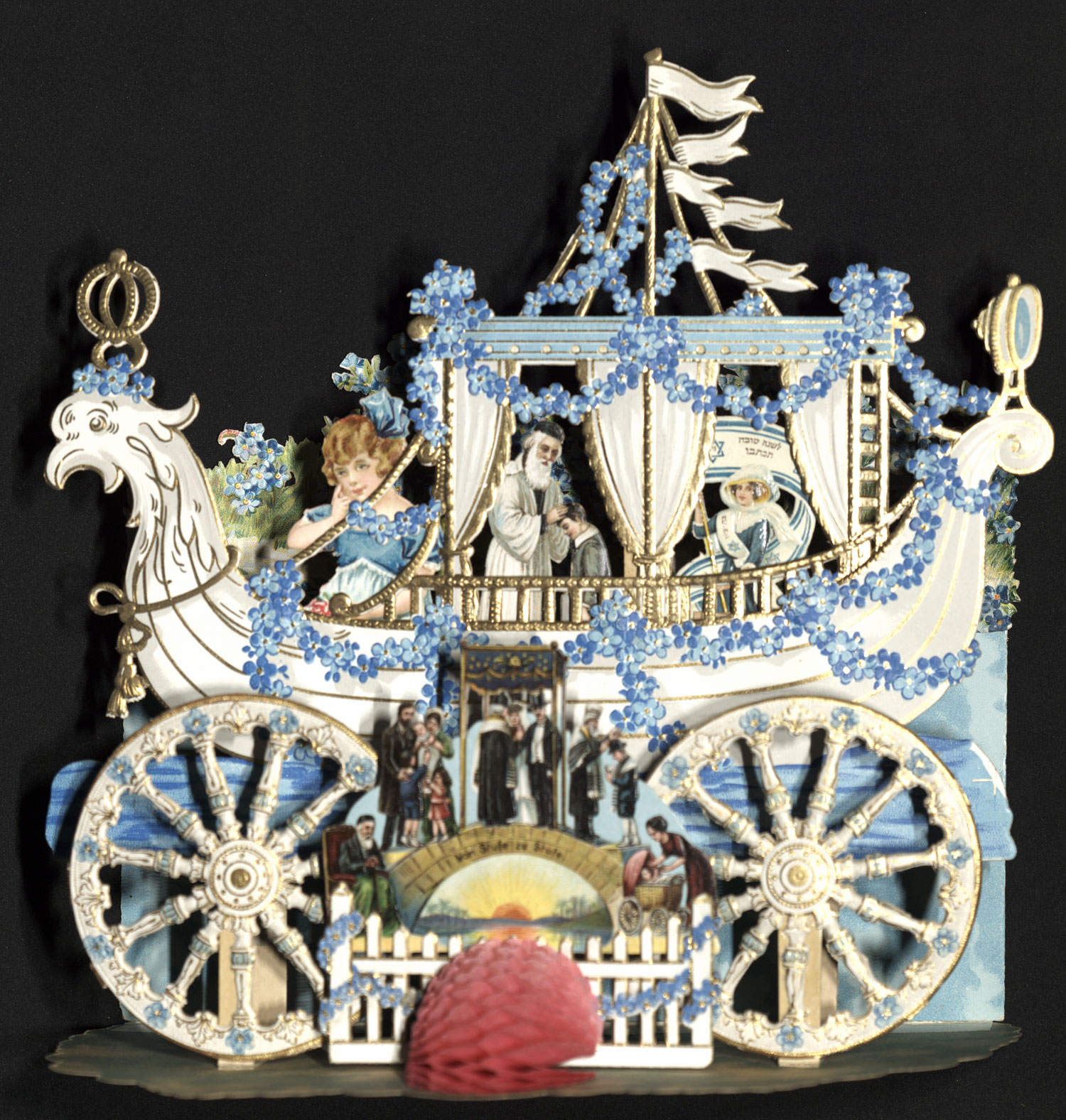This card takes a theme common in literature and art, representing life as series of steps rising from infancy, cresting at marriage, then descending from middle to old age. Graphic representations of this idea were popular in Dutch and German prints from the 18th century on. In the early 20th-century Jewish New Year’s card displayed here, essential rites of passage are depicted, including some that take place in the synagogue. The elaborate three-dimensional scene distills the Jewish life cycle into a series of five steps, leading on the right from birth to bar mitzvah, through wedding and family, and ending with old age. Inscribed on the bridge is the German “von Stufe zu Stufe” (from step to step).
The pop-up card was made in Germany, though there was a market for these cards in the United States, too. The life cycle is represented at the front and center of the card, with the image of a rabbi blessing a young boy repeated in the elaborate carriage above the “steps.” The placement of these elements in relation to the carriage suggests they were incorporated into a card originally designed for another occasion, such as a birthday, wedding, or new baby. While the birth to death motif is not the dominant aspect of the spectacle, it is certainly a defining one.
Such representations of the steps of Jewish life would have been quite familiar to viewers, bearing not just on an individual, but on the respective rituals whose celebration would reinforce Jewish identity for the entire community. In his review of Ma‘agal Ha-hayyim (The Life Cycle): Jewish Communities in the East in the Nineteenth and Twentieth Centuries, Ilia Rodov writes that these life events “reinforce group cohesion, and propose the solo journey of an individual life as an integral component of the cyclic being of a continuously renewing society.” While the commonality of experience was a way to knit together the far-flung Jewish people, recognition of the variations among the performance of certain rituals and celebrations also served to reinforce the identity of specific congregations or communities.
